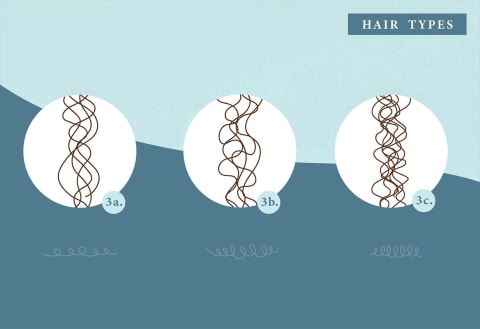Such is the case with hair types. These range from 1 (straight) to 4 (kinks), each with additional subtypes that further break down the texture and patterns of the strands on our heads. Now, most people have multiple types to care for—additionally, factors like porosity, density, and lifestyle factors can all play a role in your hair care routine. So, no, this isn’t an exact science. But understanding your type is a very good place to start. As a rundown: Type 1 is straight, with the variance usually coming down to how flat your hair lies. Type 2 is wavy, with the major differences depending on how loose the S-pattern is. Type 3 is curly, which changes depending on how tight the curl is. And Type 4 is kinky or coily, which changes depending on whether the shape of the pattern is more zigzag or springs. Hair type quiz. But let me just say again, most people have a few patterns to deal with or a patch or two that doesn’t seem to fit in with the rest. So you might have to do different techniques for different areas to make it all uniform—or go all-in on the unique textures! Not to mention there are other factors at play: hair porosity, density, and strand thickness. Essentially you’ve just got to get to know the many facets of your hair, not just type. “I cannot stress studying your hair enough. A stylist can only give you recommendations, but essentially you go home with your hair,” says Danielle Malary, owner of Lumiere Vive Salon. “Feel your hair out, document how it reacts. Essentially, keep a journal for your hair and learn to love it.”



